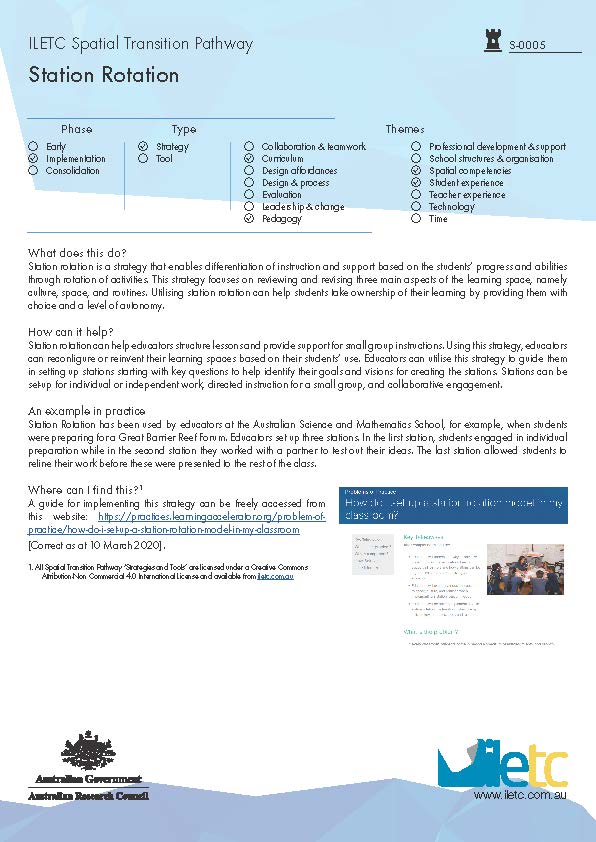| Introduction | Wayfinding activity | Spatial typologies | Spatial transition case studies | Spatial transition resources |
Spatial Transition Pathway
The Spatial Transition Pathway provides a framework for the strategies and tools which support teachers to make the journey of change into innovative learning environments. Strategy is defined as an explicit concept, theory or practice that enhances teachers’ use of innovative learning environments. A tool is an identifiable activity or protocol, that implements a strategy. You can use the database to search for strategies and tools by temporal phase or transition theme(s). If you would like to contribute a strategy or tool, please contact the ILETC team.
Station Rotation
Station rotation is a strategy that enables differentiation of instruction and support based on the students’ progress and abilities through rotation of activities. This strategy focuses on reviewing and revising three main aspects of the learning space, namely culture, space, and routines. Utilising station rotation can help students take ownership of their learning by providing them with choice and a level of autonomy.

